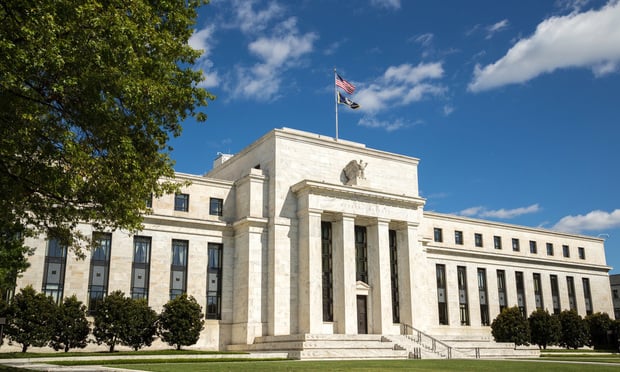NEWPORT BEACH, CA—The very first question ask in a recent annual Capital One RealShare Apartment survey sets the stage for the questions that follow: “Are you going to be a net buyer or seller next year?” Over the last three years, the gap between projected net buyers and sellers has held steady at around 30 percentage points. And according to Greg Reed, an SVP at Capital One, “Interestingly, the percentages of those choosing to be net buyers or net sellers have risen over time, as fewer respondents expect to stay on the sidelines.”
For the past several years, Capital One has surveyed multifamily industry participants at the RealShare Apartments conference to assess market sentiment for the coming year. Starting last year, the firm began using the survey as a platform for discussions from its senior bankers, who explain the implications of the findings and also add their own perspectives on the coming year.
According to Reed, he can understand the rationale of those who expect to be net sellers in 2017. “It has been seven years since the multifamily market bottomed out, and several years of strong NOI growth. For people who follow history, a pullback seems overdue.”
In the exclusive commentary below from Reed, he takes a closer look at the fundamentals and his bullish view on 2017. The views expressed below are the author's own.
The Outlook Remains Positive for Multifamily
I tend to be more bullish on multifamily in 2017 because I believe that historical trends, while useful markers, are less important than factors that are shaping the moment. It is difficult to predict the exact policies that the new administration will adopt, no less their consequences, but a pro-growth, pro-business environment in Washington would bode well for multifamily.
At the same time, the underlying fundamentals for multifamily remain solid. Demand remains very strong, with millennials entering the market in ever-larger numbers and expressing their intention—or recognizing the necessity—of continuing to rent far later in life than previous generations.
On the supply side, there has been a persistent, shortage of multifamily housing, especially on the West Coast, that has lasted more than 20 years. There are some markets, like the Silicon Valley and San Francisco, where employment deceleration could lead to softness, but generally speaking, from San Diego to Seattle demand outstrips supply—and high barriers to entry are prevalent (such as local anti-growth / density ordinances and high costs). Combine this situation with Dodd-Frank and Basel III which is limiting the supply of construction lending, and the chances of a supply shock in the near future are quite low.
Investors Who Sell Will Reinvest
As a result, I come out in the same place as the survey participants who intend to be net buyers in 2017. This doesn't preclude selling, of course. I expect that funds with specific time limitations or multifamily investors who want to lock in the gains they've achieved in the last few years will take their chips off the table, but it is likely that they will search the same markets for un-renovated assets that are prime candidates for a value-added investment.
In 2005, 2006, and 2007, we saw many of our clients reduce leverage, build up cash, and sell at historically high values—they were net sellers. The sense I get from talking with clients today is much different. Even though we have passed peak 2006 and 2007 values, they feel that this market still has legs.
Several economic factors have resulted in net positives for the multifamily sector and prices in core markets are at an all-time high. But just how long can the market continue on this trajectory? Join us at RealShare Apartments East on Feb. 28 and March 1 for insights on succeeding in the right markets as well as navigating and finding opportunities in the more challenging ones. Learn more.
NEWPORT BEACH, CA—The very first question ask in a recent annual
For the past several years,
According to Reed, he can understand the rationale of those who expect to be net sellers in 2017. “It has been seven years since the multifamily market bottomed out, and several years of strong NOI growth. For people who follow history, a pullback seems overdue.”
In the exclusive commentary below from Reed, he takes a closer look at the fundamentals and his bullish view on 2017. The views expressed below are the author's own.
The Outlook Remains Positive for Multifamily
I tend to be more bullish on multifamily in 2017 because I believe that historical trends, while useful markers, are less important than factors that are shaping the moment. It is difficult to predict the exact policies that the new administration will adopt, no less their consequences, but a pro-growth, pro-business environment in Washington would bode well for multifamily.
At the same time, the underlying fundamentals for multifamily remain solid. Demand remains very strong, with millennials entering the market in ever-larger numbers and expressing their intention—or recognizing the necessity—of continuing to rent far later in life than previous generations.
On the supply side, there has been a persistent, shortage of multifamily housing, especially on the West Coast, that has lasted more than 20 years. There are some markets, like the Silicon Valley and San Francisco, where employment deceleration could lead to softness, but generally speaking, from San Diego to Seattle demand outstrips supply—and high barriers to entry are prevalent (such as local anti-growth / density ordinances and high costs). Combine this situation with Dodd-Frank and Basel III which is limiting the supply of construction lending, and the chances of a supply shock in the near future are quite low.
Investors Who Sell Will Reinvest
As a result, I come out in the same place as the survey participants who intend to be net buyers in 2017. This doesn't preclude selling, of course. I expect that funds with specific time limitations or multifamily investors who want to lock in the gains they've achieved in the last few years will take their chips off the table, but it is likely that they will search the same markets for un-renovated assets that are prime candidates for a value-added investment.
In 2005, 2006, and 2007, we saw many of our clients reduce leverage, build up cash, and sell at historically high values—they were net sellers. The sense I get from talking with clients today is much different. Even though we have passed peak 2006 and 2007 values, they feel that this market still has legs.
Several economic factors have resulted in net positives for the multifamily sector and prices in core markets are at an all-time high. But just how long can the market continue on this trajectory? Join us at RealShare Apartments East on Feb. 28 and March 1 for insights on succeeding in the right markets as well as navigating and finding opportunities in the more challenging ones. Learn more.
Continue Reading for Free
Register and gain access to:
- Breaking commercial real estate news and analysis, on-site and via our newsletters and custom alerts
- Educational webcasts, white papers, and ebooks from industry thought leaders
- Critical coverage of the property casualty insurance and financial advisory markets on our other ALM sites, PropertyCasualty360 and ThinkAdvisor
Already have an account? Sign In Now
© 2024 ALM Global, LLC, All Rights Reserved. Request academic re-use from www.copyright.com. All other uses, submit a request to [email protected]. For more information visit Asset & Logo Licensing.









